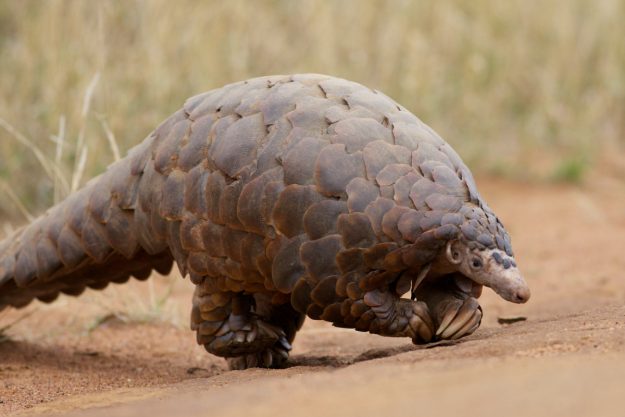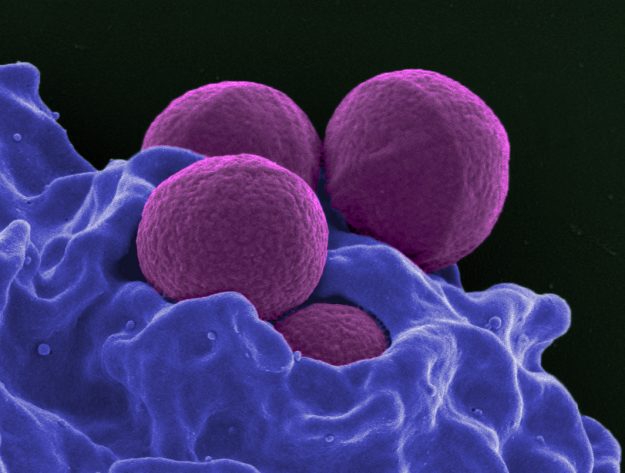by Leonoor Zuiderveen Borgesius, PhD Candidate, University of Oslo
The Covid-19 pandemic testifies to the importance of understanding human relationships to the environment as entangled. This pathogen is the most recent, but certainly not the first, aggressive reminder of how overwhelmingly physical the intertwinement between environments and human bodies is. SARS-Cov-2 is a zoonosis, a disease transferred to people by animals from another species. It may have transferred from pangolin to human on a Chinese ‘wet market’ (Image 1). In these open-air markets, wild game is sold and slaughtered on sight for its meat or, in the case of the pangolin, its scales. In some brands of Asian traditional medicine, the consumption of body parts of certain wild animals allows humans to ingest their characteristics like strength, agility, or fertility. Building on these traditions, it is the exquisite nature of such meat that raised its high demand among the ultra-rich. The devastating effects of this virus invite a discussion about the complex and intimate connections among humans as consumers, between humans and those animals they consume, and finally, about how together they cohabit in space and time.

The new coronavirus is not the first zoonosis with vast deadly effects. However, it is the first that, since the Spanish flu, has made its way to the cultural and capitalist centers of the western world, with catastrophic effects for their economies. Ebola (transferred by human consumption of bats) has caused tens of thousands of deaths, and HIV (presumably transferred from a chimpanzee) has made no less than 34 million victims. These viruses were raging in West-Africa, Eastern Europe, and LGBTQ-communities in the western world, by and large marginalized spheres around the globe.
A disease with an unimaginable deadliness like Ebola seems to belong to “Other” spaces, including its occurrence in other times. Violent imperial histories of explorers fighting malaria have narrated Africa as primitive and impenetrable because of the relentless tropic fevers. The HIV-virus made its way to the United States, where it victimized and stigmatized the outlandish members of society. Their vulnerability was unforgivingly explained by what was considered abhorrent, immoral, uncivilized behavior. Today, the exoticization of the new coronavirus can be seen with the insistence of the US Government to address China as the virus’ origin. Quite like skyrocketing everyday racism against Asian Europeans, this blame builds upon much older colonial discourses that dictate what is “Other” and therefore dangerous. As can be seen, those discourses that connect the tropics to dangerous disease and disposability of human life are violently persistent today. French doctors suggested that Africa could be a testing ground for the vaccine against the new coronavirus, a “hangover from colonial mentality that needs to stop” according to the head of the WHO, Tedros Adhanom Ghebreyesus.
Feeding into this idea of the virus as something of another place, species, or environment, is the nature of the interactions with animal bodies through which the virus could spread. Sonia Shah shows in her book Pandemic, Tracking Contagions, from Cholera to Ebola and Beyond (2016) how a combination of enhanced and prolonged interspecies contact and a lack of biodiversity allows pathogens to circulate between human and nonhuman bodies. In Europe, cattle are not slaughtered in the open air, and there are no farms where civets or dogs are caught or bred for consumption. Nonetheless, animals are bred into being for humans to eat their body parts on an unprecedented and industrial scale.
For instance, the Netherlands is the most densely populated country in Europe, both in terms of people and cattle, and it has a substantial and politically present agricultural sector. The latest zoonosis was Q-fever, causing extreme fatigue and heart failure. Between 2007 and 2010, this virus infected about a hundred thousand people, left a thousand chronically ill, and killed about a hundred people on and around goat farms. Q-fever was hard to trace down, because it could not move through interhuman contact; and in some people the symptoms only manifested themselves after months or even years. The RIVM, the national health authority, responded to the Q-fever crisis by intensifying communications and knowledge sharing between veterinarian and human medical scientists. Although their recommendations for the preservation of public health have been systematically dismissed by the Ministry for Agriculture under pressure of the agricultural sector, this effort goes to show how microbes also blur scientific boundaries between environments.
Ironically, many of the Dutch goat farmers had chosen to switch the production from pigs to goats after the swine flu outbreak had caused them to cull and destroy no less than 11 million animals a few years earlier. When animals are held in stables with hundreds or even thousands of genetically similar individuals at the same time, pathogens can easily move from one body to another. For that reason, and because it causes a slight increase in physical growth of the animals’ body mass, the use of antibiotics is widespread among pig farmers across the world. The closer humans and animals are moved into the same habitat, the lower and less sophisticated the microbial barriers for both viruses and bacteria become. The aggressive and drug-resistant MRSA bacteria, that has been ravaging the effectiveness of antibiotics within the health sector in the last decades, shows that microbes that can repeatedly move from pigs to humans and back can pose serious, deadly threats to human and nonhuman bodies (Image 2).

This goes to show why environmental boundaries between human urban space and the nonhuman, wild space become increasingly unhelpful in understanding how also the current Covid-19 pandemic came about, how to suppress it, and how it could have been prevented. Like historian of technology Kate Brown argues, “self-isolation is key if we want to stop the pandemic – and yet the need for isolation is, in itself, an acknowledgement of our deep integration with our surroundings.” Not only in terms of scientific knowledge practices but also in biological terms, different environments, nature, and culture are all intimately entangled.
Animals have a particular role to play in defining those spaces as separate environments of home, wilderness, and production. Confined to their domestic spheres, people have collectively been seeking out the company of pets. In Chicago, they have been adopting so many dogs and cats that that the local shelter has been empty for the first time in its existence. In these same homes, Netflix aired the mega-success Tiger King, a documentary about the unadulterated insanity of private tiger farms that keep more tigers in captivity in the US than exist in the wild worldwide. After seven episodes of absurdist entertainment, a viewer might arguably conclude that the charismatic animals with which it all started are the ones that are left stranded by the very people that claimed to protect them, and deserve better than to live a life in small, filthy cages to the amusement of naïve spectators.
Whether it is tigers, dogs, pigs, goats, or pangolins, the deadly devastation and socio-economic disruption of pandemics like the one caused by the new coronavirus testify to the fact that in biological terms, their bodies as microbial ecosystems are part of the same multi-species environment. Yet, the cognitive dissonance that has been cultivated for the last decades with regards to what animals deserve compassion and which are consumption products is part and parcel to what dictates a discursive separation of what animals are house pets, poached or captive wild animals, domesticated factory goods, or a combination. At best, upholding this separation runs the risk of being analytically limited for environmental humanities scholars, and, at worst and when perpetuated by national governments with economic interests, it has proven to be lethal.
Further reading:
- Sonia Shah, Tracking Contagions, from Cholera to Ebola and Beyond (New York: Sarah Crighton Books, 2016)
- Thomas Muntz, Felix Voogt, and Emiel Woutersen in De Groene Amsterdammer, ‘We zijn nog steeds niet voorbereid’ (April 15, 2020)
- David Benatar in The New York Times, ‘Our Cruel Treatment of Animals Led to the Coronavirus’ (April 13, 2020)
- Kate Brown in The New Yorker, ‘The Pandemic is not a Natural Disaster’ (13 April 2020)
- Sheila Jasanoff interviewed by The Nation, ‘Science Will Not Come on a White Horse With a Solution’ (April 6, 2020)
- On the resistant MRSA bacteria, Beth Mole in Nature, ‘MRSA: Farming up trouble’ (24 July 2013).
Author’s Bio: Leonoor is a PhD candidate at the University of Oslo and a guest at the EHL in the Spring of 2020. As part of the research project LIFETIMES – A Natural History of the Present, she writes a dissertation on imperial infrastructure and Dutch civil engineering in the late 19th and early 20th century. In particular, the project deals with imaginaries of empty space and progress in engineering practices, and how they travelled and developed between colonial and domestic spaces, while shaping both.

